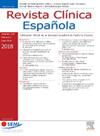65岁及以上住院患者的短期和长期特征和进化结果。研究EDEN-40
IF 1.7
4区 医学
Q2 MEDICINE, GENERAL & INTERNAL
引用次数: 0
摘要
目的确定65岁及以上急诊科(ED)患者在养老院生活的相关变量,并评估其预后。方法纳入2019年4月一周内在52家西班牙急诊科就诊的65岁及以上患者,并根据他们是住在养老院还是住在家里进行分类。采用logistic回归模型,计算95%可信区间(CI)的优势比(OR),分析两组患者的特征及差异。评估指标发作后30天和1年的死亡率、急诊科复诊率和住院率,计算风险比(HR)及其95% CI,并采用Cox回归进行对数秩统计。结果共分析23629例患者,其中1569例(6.6%)居住在养老院。在研究的18个变量中,有几个变量在多变量模型中与住在养老院有关,以下显示了显著的结果:无法行走,OR 11.330 (95% CI 8.967-14.314);辅助行走,OR 5.687 (95% CI 4.759-6.796);认知障碍,OR 2.802 (95% CI 2.448-3.208);年龄大于85岁,OR 2.191 (95% CI 1.821-2.636)。30天和1年的总死亡率分别为4.4%和13.7%,在养老院患者中均较高,调整后的风险比分别为1.472 (95% CI 1.236-1.753)和1.421 (95% CI 1.282-1.576)。在调整后的全球模型中,30天和1年的ED复诊和住院率没有差异。结论65岁及以上在急诊科就诊并住在养老院的患者基线状况较住在家里的患者差。在30天和1年的随访期间,这些患者的总体死亡率也较高,尽管急诊科复诊或住院率没有差异。本文章由计算机程序翻译,如有差异,请以英文原文为准。
Características y resultados evolutivos a corto y largo plazo en los pacientes de 65 o más años que viven en residencia. Estudio EDEN-40
Objective
To identify the variables associated with living in a care home in patients aged 65 or older who consult in the emergency department (ED), and to assess their outcomes.
Methods
Patients aged 65 or older who consulted in 52 Spanish ED during one week in April 2019 were included and classified according to whether they lived in a care home or at their family home. The characteristics of these patients and the differences between the two groups were investigated using a logistic regression model and the calculation of the odds ratio (OR) with its 95% confidence interval (CI). Mortality, ED revisits, and hospitalization rates at 30 days and at 1 year after the index episode were evaluated, calculating the hazard ratios (HR) and their 95% CI, as well as the log-rank statistic with Cox regression.
Results
A total of 23,629 patients were analyzed, of which 1,569 (6.6%) lived in a care home. Of the 18 variables explored, several were associated with living in a care home in the multivariate model, with the following showing significant results: inability to ambulate, OR 11.330 (95% CI 8.967-14.314); ambulation with assistance, OR 5.687 (95% CI 4.759-6.796); cognitive impairment, OR 2.802 (95% CI 2.448-3.208); and age over 85 years, OR 2.191 (95% CI 1.821-2.636). Total mortality at 30 days and 1 year was 4.4% and 13.7%, respectively, both being higher in the care home patients, with an adjusted HR of 1.472 (95% CI 1.236-1.753) and 1.421 (95% CI 1.282-1.576), respectively. There were no differences in ED revisits or hospitalization in 30 days and 1 year in the adjusted global model.
Conclusions
Patients aged 65 or older who consult in the ED and live in a care home have a worse baseline condition compared to those living at home. During follow-up at 30 days and 1 year, these patients also have higher overall mortality, although there are no differences in ED revisits or hospitalization.
求助全文
通过发布文献求助,成功后即可免费获取论文全文。
去求助
来源期刊

Revista clinica espanola
医学-医学:内科
CiteScore
4.40
自引率
6.90%
发文量
73
审稿时长
28 days
期刊介绍:
Revista Clínica Española published its first issue in 1940 and is the body of expression of the Spanish Society of Internal Medicine (SEMI).
The journal fully endorses the goals of updating knowledge and facilitating the acquisition of key developments in internal medicine applied to clinical practice. Revista Clínica Española is subject to a thorough double blind review of the received articles written in Spanish or English. Nine issues are published each year, including mostly originals, reviews and consensus documents.
 求助内容:
求助内容: 应助结果提醒方式:
应助结果提醒方式:


